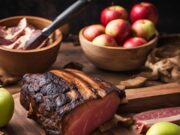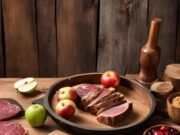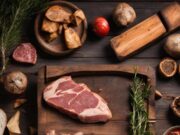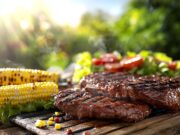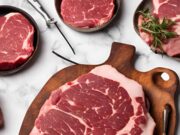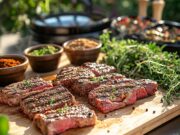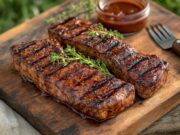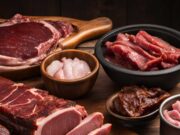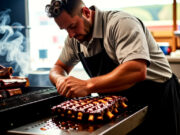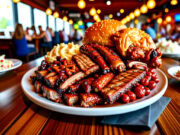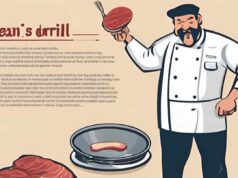Barbecue enthusiasts understand that mastering the art of grilling hinges on effective temperature control.
The decision between direct and indirect heat can greatly influence the flavor and texture of your dishes.
It is essential to explore the fundamentals of BBQ cooking methods, emphasizing the unique characteristics and optimal applications of both direct and indirect heat.
You will learn how to manage temperatures for each technique effectively and when to utilize them, ensuring delicious results every time you light up the grill.
Key Takeaways:
- Direct heat is perfect for quick cooking and achieving a crispy exterior, while indirect heat is ideal for slow cooking and evenly cooking larger cuts of meat.
- Using a combination of direct and indirect heat can maximize flavor and texture in BBQ cooking. Adjusting temperature through fuel placement and ventilation is key to mastering temperature control.
- Consider the type of meat and desired outcome when choosing between direct and indirect heat. Direct heat works well for thinner cuts of meat and vegetables, while indirect heat is suitable for thicker cuts and dishes that require longer cooking times.
Understanding Direct Heat Cooking
Direct heat cooking is a widely recognized BBQ method that involves using high temperatures to quickly cook food, making it ideal for searing meats and achieving an optimal char. This technique is especially effective for dishes such as Grilled Scrum-Delicious Burgers and Grilled Steak Tacos, where a brief cooking time guarantees flavorful and juicy results.
It is a preferred choice among grill masters and enthusiasts looking to elevate their cooking.
Characteristics and Best Uses
The characteristics of direct heat cooking encompass high temperatures and quick cooking times, making it an excellent choice for searing and browning meat while enhancing both flavor and texture. This technique is particularly effective for grilling thin cuts of meat, such as Grilled Feta-Dill Chicken Burgers and Grilled Shrimp with Plums, where achieving a charred exterior is essential for flavor development.
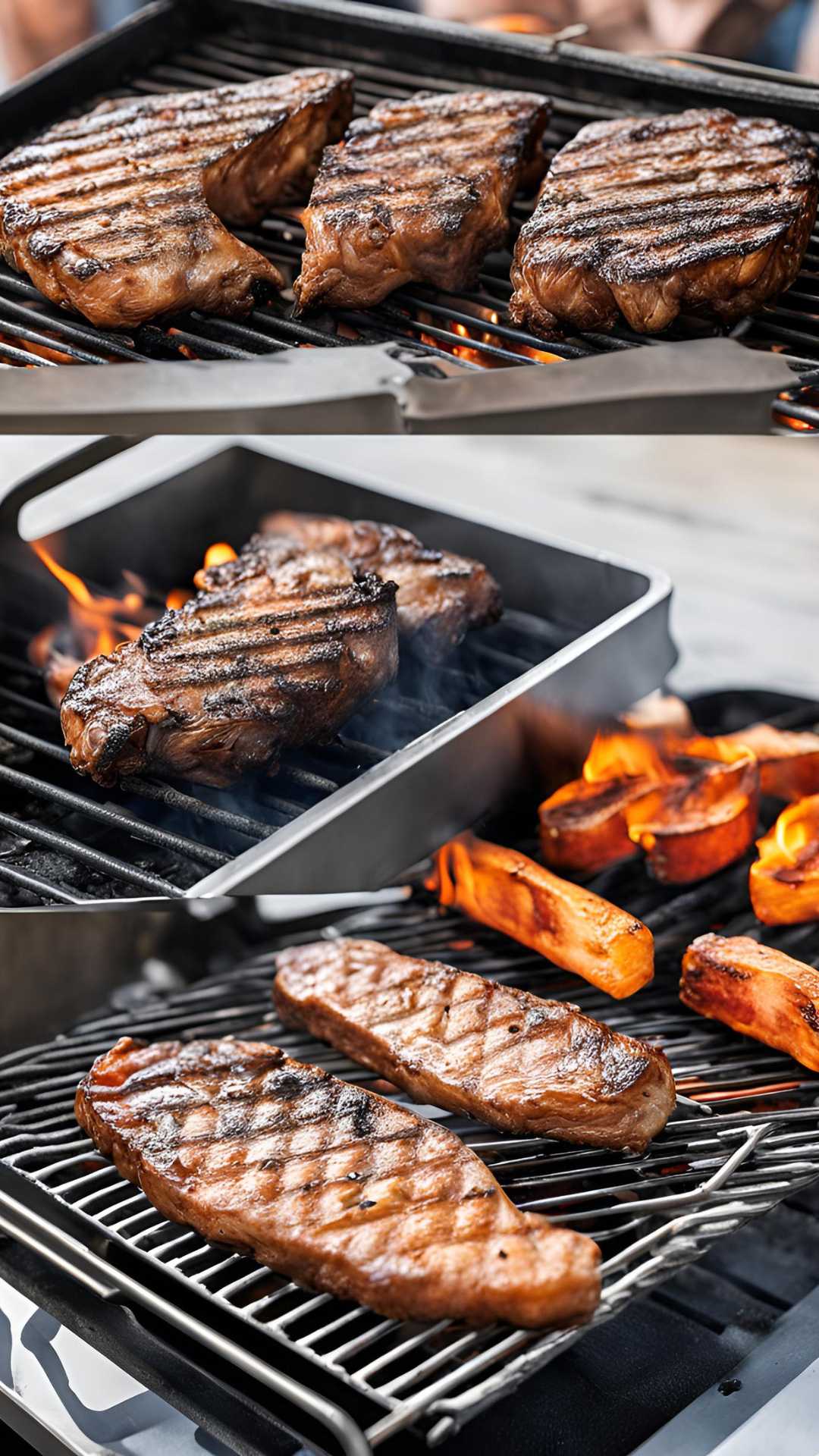
Direct heat cooking is also ideal for vegetables, allowing them to caramelize beautifully while retaining their crunch. It excels with items like asparagus or bell peppers, which can be quickly placed on a hot grill to enhance their natural sweetness.
This method is especially advantageous for preparing dishes such as Grilled Vegetable Skewers or Cajun Spiced Corn on the Cob, where the aim is to create vibrant, charred flavors that complement the primary ingredients. By taking into account the type of food being cooked, this technique can elevate meals, making them not only delicious but also visually appealing.
Understanding Indirect Heat Cooking
Indirect heat cooking entails positioning food away from the direct flames of the grill. This technique allows for slower and more controlled cooking, making it ideal for larger cuts of meat or delicate seafood.
Utilizing this method is especially advantageous for dishes such as Grilled Lobster Tails and Big John’s Chili-Rubbed Grilled Ribs, as it promotes even cooking, ensuring tenderness and the development of rich flavors.
Characteristics and Best Uses
The characteristics of indirect heat include lower temperatures and longer cooking times, which make it an ideal method for slow cooking and enhancing flavor development in meats. This technique is particularly effective for dishes such as Grilled Huli Huli Turkey Drumsticks and Grilled Pineapple Chicken, where patience contributes to exceptional taste and texture.
By utilizing indirect heat, you can achieve tender, juicy results that are often challenging to replicate with traditional cooking methods. This approach is especially beneficial for larger cuts of meat, such as brisket and pork shoulders, which require time to fully break down connective tissues.
Recipes like smoked beef ribs and herb-roasted whole chicken exemplify the benefits of this technique, as they develop rich flavors and succulent textures through hours of low-temperature cooking. Additionally, vegetables such as corn on the cob or asparagus also experience enhanced taste when prepared using indirect heat, making this method versatile and suitable for a wide variety of dishes.
Comparing Direct and Indirect Heat
When comparing direct and indirect heat cooking methods, it is clear that each technique serves distinct purposes, significantly impacting the final outcome of BBQ dishes in terms of flavor, texture, and cooking time.
Direct heat is particularly well-suited for quick grilling, as exemplified by Grilled Scrum-Delicious Burgers, while indirect heat is more effective for dishes such as Grilled Key West Flank Steak. Understanding these methods is essential for enhancing your grilling experience.
Benefits of Each Method
The benefits of using direct heat in your cooking include speed and the ability to achieve a desirable sear, making it ideal for burgers and steaks. On the other hand, employing indirect heat allows for controlled cooking that enhances tenderness and flavor, which is particularly effective for ribs and larger cuts of meat. Both methods demonstrate their effectiveness in achieving delicious BBQ results.
When planning a family BBQ, the choice of cooking method can significantly impact the dining experience. Direct heat excels in providing that characteristic char and crispiness, which is essential for grilling juicy chicken thighs or vibrant vegetable skewers. The quick cooking time not only preserves the freshness of these ingredients but also creates an appetizing texture that appeals to everyone.
Conversely, opting for indirect heat can transform tougher cuts like brisket into melt-in-your-mouth masterpieces, slowly coaxing out rich flavors and succulent moisture. This method is particularly effective when combined with marinades, allowing spices to permeate the meat for a robust flavor profile that is simply irresistible.
When to Use Each Cooking Technique
Knowing when to use direct heat versus indirect heat is essential for you to master your grilling techniques. Direct heat is ideal for quick-cooking items such as Grilled Steak Tacos, while indirect heat is preferable for tougher cuts like Big John’s Chili-Rubbed Grilled Ribs, which require a longer, gentler cooking method.
Understanding these techniques not only enhances flavor but also contributes to achieving the desired texture. For instance, skewered vegetables or shrimp benefit significantly from the intense, immediate heat of direct grilling, allowing them to develop a delightful char. In contrast, whole chickens or pork shoulders perform best when cooked using indirect heat, ensuring even cooking and preventing them from drying out.
By selecting the right technique based on the type of food and desired outcome, you can elevate your backyard barbecues and impress your guests with perfectly cooked meals that showcase the unique flavors infused through each method.
Mastering Temperature Control
Mastering temperature control is essential for ensuring BBQ success, as it directly affects the doneness and flavor of your grilled creations. Whether you are preparing Grilled Mahi Mahi or Spiced Grilled Chicken with Cilantro Lime Butter, understanding how to effectively manage your grill’s temperature can enhance your cooking experience and lead to exceptional, mouthwatering dishes.
Tips for Effective Grilling
Effective grilling requires your attention to detail, particularly in areas such as temperature management, timing, and selecting the appropriate cooking method for your dishes. For example, understanding how to grill Grilled Shrimp & Tomatoes with Linguine using direct heat, while employing indirect heat for Honey Smoked Salmon, can significantly enhance the flavor profile and overall success of your meals.
To achieve optimal results, it is essential to preheat your grill adequately before placing food on the grate. This practice not only helps you achieve those perfect grill marks but also reduces the likelihood of sticking.
Monitoring the internal temperature of your proteins with a reliable meat thermometer ensures that everything is cooked to perfection. Timing can vary across different types of food; for instance, delicate vegetables may require only a few minutes, while thicker cuts of meat will necessitate a longer cooking time.
By mastering these fundamental techniques, you can elevate your grilling skills and impress your guests with delicious, well-prepared meals. Learn more about Direct vs. Indirect Heat: How to Control Temperature for Different BBQ Methods
Frequently Asked Questions
What is the difference between direct and indirect heat in BBQ methods?
Direct heat involves cooking food directly over the heat source, while indirect heat involves cooking food away from the heat source.
How does direct heat affect the temperature for BBQ methods?
Direct heat results in a high, intense heat that can quickly cook food, making it ideal for grilling and searing.
How does indirect heat affect the temperature for BBQ methods?
Indirect heat creates a lower, more gentle heat that is better for slow cooking and smoking food.
Can direct heat and indirect heat be used together in BBQ methods?
Yes, many BBQ methods utilize a combination of both direct and indirect heat to achieve the desired result.
How can I control the temperature for direct heat in BBQ methods?
The temperature for direct heat can be controlled by adjusting the distance between the food and the heat source, as well as the intensity of the heat source.
How can I control the temperature for indirect heat in BBQ methods?
The temperature for indirect heat can be controlled by adjusting the airflow and placement of the food in the cooking chamber, as well as the size and amount of fuel used.


